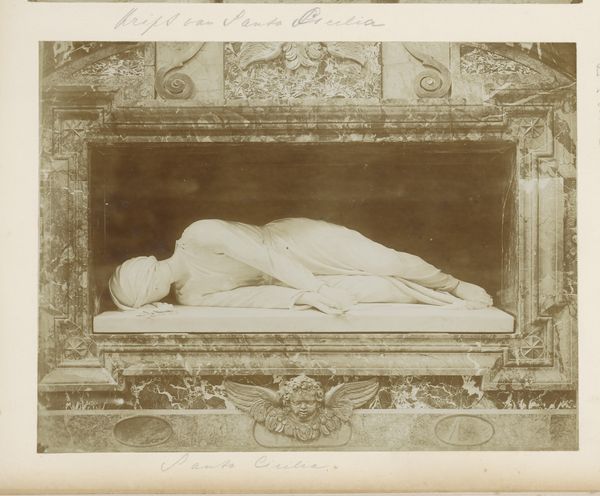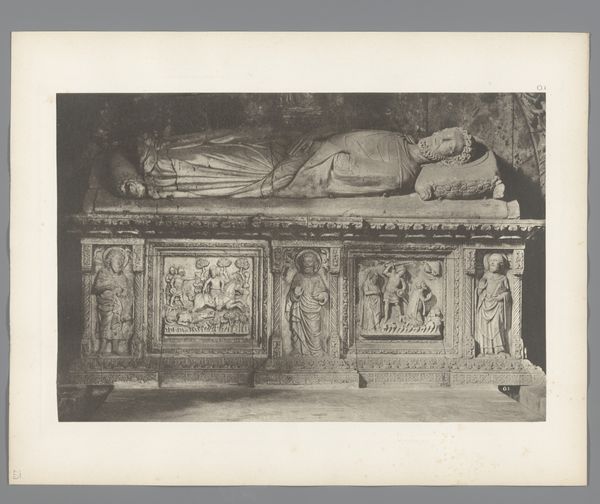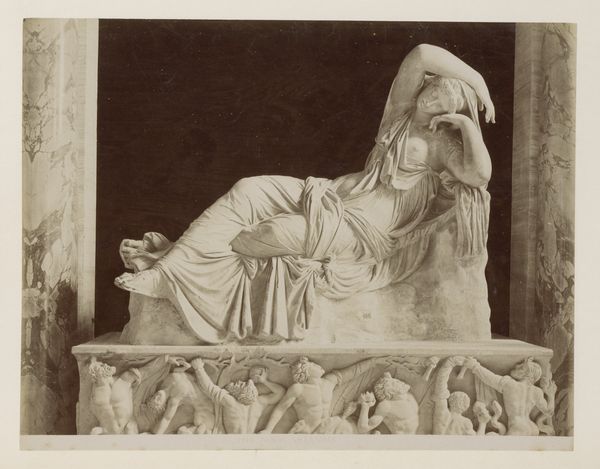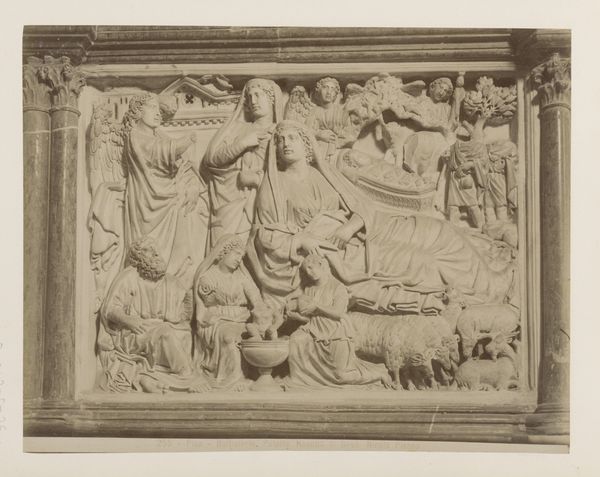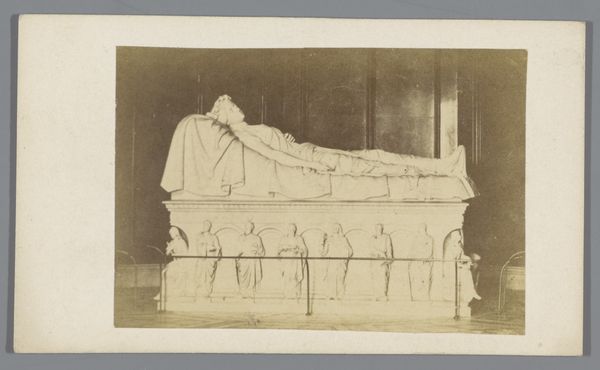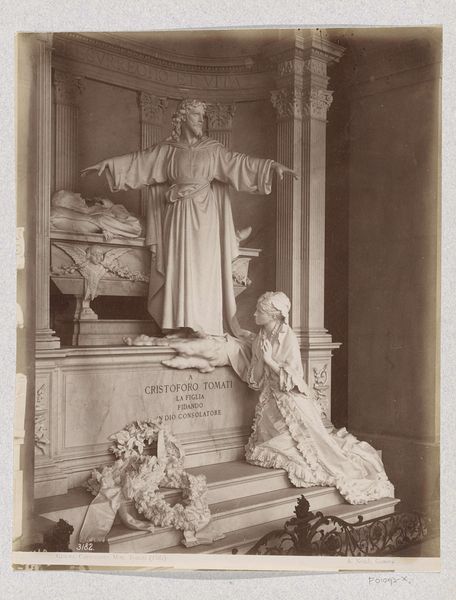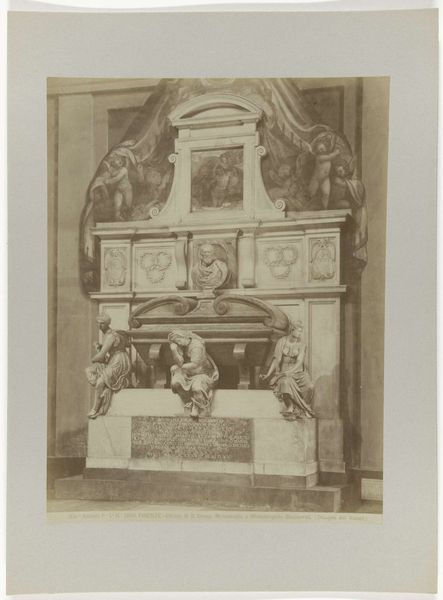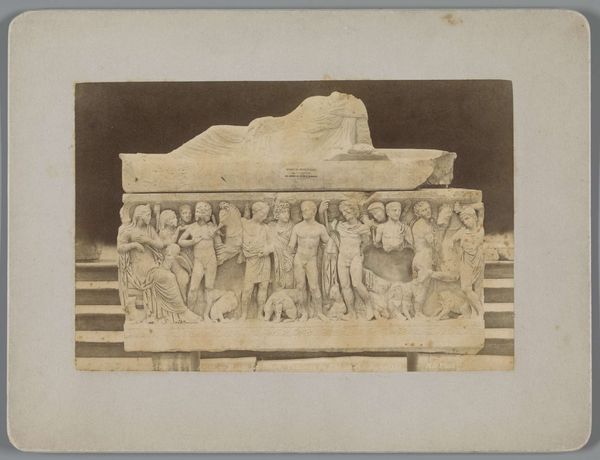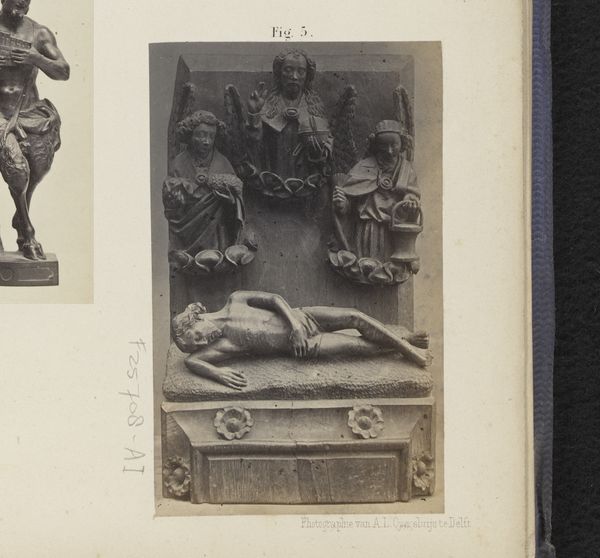
Graftombe van Kardinaal Talavera in het Hospital de San Juan Bautista in Toledo after 1863
0:00
0:00
photography, sculpture, marble
#
portrait
#
sculpture
#
photography
#
sculpture
#
marble
Dimensions: height 200 mm, width 260 mm
Copyright: Rijks Museum: Open Domain
Editor: Wow, the first thing that hits me is the sheer gravity of this thing. Like, the weight of history is just radiating off it. Curator: Absolutely. We are looking at a photograph, captured some time after 1863, by Rafael Garzón. The subject is the tomb of Cardinal Talavera located in the Hospital de San Juan Bautista in Toledo. A striking work crafted in marble. Editor: Marble. Of course! It has that timeless feel to it. There's so much going on in this one image, a feast of angels and virtues swirling around a dignified man that radiates composure. What can you tell me about Cardinal Talavera? Curator: Francisco Jiménez de Cisneros, or Cardinal Talavera as he's often known, was a pretty pivotal figure in Spanish history. He was a trusted advisor to Queen Isabella I, playing a significant role in political and religious reforms, his tomb is meant to mirror the magnitude of his character and lasting impact. Editor: And Garzón captured all that pomp in an early photograph. Did marble make a frequent appearance in this artist's style? Curator: Well, Garzón was a photographer first and foremost. What we're actually seeing here is an early photographic record of a piece of sculpture. He was capturing art through art. This type of photography played a crucial role in documenting and disseminating knowledge about artworks before modern methods existed. Editor: Interesting, so it's a portrait of a tomb...a stone cold portrait. Thinking of this photograph’s context—those early days of photographic technology — Garzón turned an old relic into something entirely new. The marble of Cardinal Talavera meets the wet plate, or whatever method he may have employed to give this sculpture another form. I feel like this single capture has added yet another layer of significance. It gives you shivers. Curator: Precisely! And perhaps that intersection, that dialogue between materials and forms across time, is the true essence captured in Garzón’s image. It invites us to think not just about the man, but the narratives around art and history that he enabled through it. Editor: A marble man mirrored, yet reshaped, in light. A reminder that even stillness holds untold stories.
Comments
No comments
Be the first to comment and join the conversation on the ultimate creative platform.



